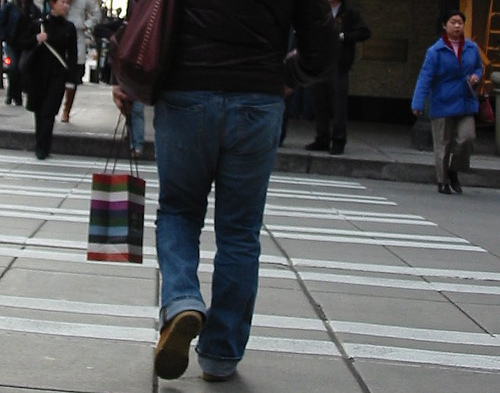AARP Hearing Center

The nation’s baby boomers have already begun turning 65 setting off an unprecedented growth in the state's older population. By 2025, nearly 20 percent of New York's population will be over age 65. Just 13 years from now 8,000 baby boomers will be turning 80 years old every day in the U.S. AARP now has 65,000 members over the age of 100 across the US. 850 live in Suffolk County. As our nation – and state and county– undergoes this population shift, we are also experiencing a change in the paradigm of retirement. More and more older adults today are staying in their homes and communities with the goal of remaining independent and living active, vital lives.
Unfortunately, many of New York's streets and roads create barriers for people who want to age in place and remain active where they live. New York ranks fourth in the nation for pedestrian fatalities for people over 65. Twenty-two percent of traffic deaths in New York involve pedestrians -- twice the national average and we have some of the most dangerous roadways right here on Long Island. According to a recent AARP report, nationally, most people age 50+ feel their neighborhoods do not have adequate sidewalks and nearly half feel that streets near their homes are not safe to cross on foot.
Despite these troubling statistics, more than two-thirds of transportation planners and engineers have not begun to consider the needs of older people in street planning. There is, however, an approach to road design that can help residents of our communities get around safely. Complete Streets will ensure that when roads of Suffolk County are planned, the needs of all users and modes of transportation are taken into consideration. This resolution requires pedestrian accommodations, such as crosswalks, lane striping, curb cuts, sidewalks and timed crossing signals, to be considered, where appropriate, in the planning of roads. This legislation would not only benefit older adults. Complete Streets benefit all of us: transit users, bicyclists, people with disabilities and pedestrians of all ages and abilities-- including youth traveling to school and parents with strollers. It even makes driving conditions safer for new and old drivers alike. This local law is a great compliment to the state law for complete streets that AARP advocated and secured passage for last year.
Safe and accessible roadways and sidewalks are a vital link in our transportation system. They help older New Yorkers access essential community services, stay active, and give back to their communities as they age. More importantly, they save lives by creating safer streets for people of all ages. The livability of our communities depends on having safe travel choices.
Legislator Rob Calarco’s bill (IR 2025) establishing a Complete Streets Program for Suffolk County roadways passed unanimously at the General Meeting of the Legislature on December 4th. The bill, which directs the Department of Public Works to consider all modes of travel when designing a road project, requires the DPW to evaluate the feasibility of using a host of features to accommodate not only motorists, but also pedestrians, bicyclists, bus riders, senior citizens, people with disabilities etc. The Complete Streets program is fully supported by the AARP/Livable Communities, Vision Long Island, and the Tri-State Transportation
Roadways designed as complete streets change everything—from the way people move about and between their communities to the environmental and public safety impacts of traditional road travel. In this way, complete streets are more conducive to public life, an essential ingredient for communities and businesses to thrive. Further, the concept of designing roadways for multiple types of users, including senior citizens, is viewed by the AARP as essential in promoting age-friendly communities.
AARP, Tri-State Transportation Campaign, and Vision Long Island have already reached out to Nassau County officials to discuss passage of a bill there. If you are interested in volunteering in your community contact Will Stoner at wstoner@aarp.org.































































